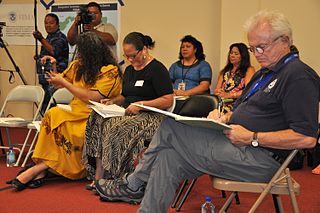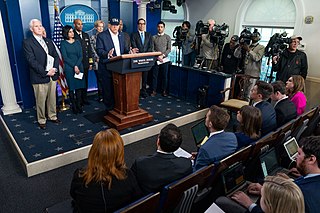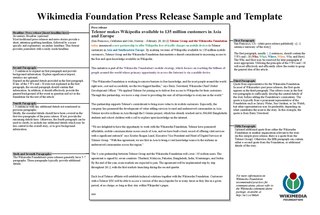
Public relations (PR) is the practice of managing and disseminating information from an individual or an organization to the public in order to influence their perception. Public relations and publicity differ in that PR is controlled internally, whereas publicity is not controlled and contributed by external parties. Public relations may include an organization or individual gaining exposure to their audiences using topics of public interest and news items that do not require direct payment. The exposure is mostly media-based, and this differentiates it from advertising as a form of marketing communications. Public relations aims to create or obtain coverage for clients for free, also known as earned media, rather than paying for marketing or advertising also known as paid media. But in the early 21st century, advertising is also a part of broader PR activities.

In public relations and politics, spin is a form of propaganda, achieved through knowingly providing a biased interpretation of an event or campaigning to influence public opinion about some organization or public figure. While traditional public relations and advertising may manage their presentation of facts, "spin" often implies the use of disingenuous, deceptive, and manipulative tactics.

Media manipulation refers to orchestrated campaigns in which actors exploit the distinctive features of broadcasting mass communications or digital media platforms to mislead, misinform, or create a narrative that advance their interests and agendas.

A press release is an official statement delivered to members of the news media for the purpose of providing information, creating an official statement, or making an announcement directed for public release. Press releases are also considered a primary source, meaning they are original informants for information. A press release is traditionally composed of nine structural elements, including a headline, dateline, introduction, body, and other components. Press releases are typically delivered to news media electronically, ready to use, and often subject to "do not use before" time, known as a news embargo.
Skiptracing is the process of locating a person's whereabouts. Skiptracing tactics may be employed by a skip tracer, contact tracer, debt collector, process server, bail bondsman or bail agency enforcer, repossession agent, bail enforcement agent, private investigator, lawyer, police detective, journalist, stalker or by any person attempting to locate a subject whose contact information is not immediately known. Similar techniques have also been used by investigators to locate witnesses in criminal trials.

A press kit, often referred to as a media kit in business environments, is a pre-packaged set of promotional materials that provide information about a person, company, organization or cause and which is distributed to members of the media for promotional use. Press kits are often distributed to announce a release or for a news conference.
A media monitoring service, a press clipping service or a clipping service as known in earlier times, provides clients with copies of media content, which is of specific interest to them and subject to changing demand; what they provide may include documentation, content, analysis, or editorial opinion, specifically or widely. These services tend to specialize their coverage by subject, industry, size, geography, publication, journalist, or editor. The printed sources, which could be readily monitored, greatly expanded with the advent of telegraphy and submarine cables in the mid- to late-19th century; the various types of media now available proliferated in the 20th century, with the development of radio, television, the photocopier and the World Wide Web. Though media monitoring is generally used for capturing content or editorial opinion, it also may be used to capture advertising content.
A publicist is a person whose job is to generate and manage publicity for a company, a brand, or public figure – especially a celebrity – or for work or a project such as a book, film, or album. Publicists are public relations specialists who maintain and represent the images of individuals, rather than representing an entire corporation or business. Publicists are also hired by public figures who want to maintain or protect their image. Publicists brand their clients by getting magazine, TV, newspaper, and website coverage. Most top-level publicists work in private practice, handling multiple clients.
Journalistic ethics and standards comprise principles of ethics and good practice applicable to journalists. This subset of media ethics is known as journalism's professional "code of ethics" and the "canons of journalism". The basic codes and canons commonly appear in statements by professional journalism associations and individual print, broadcast, and online news organizations.
Mass communication is the process of imparting and exchanging information through mass media to large population segments. It utilizes various forms of media as technology has made the dissemination of information more efficient. Primary examples of platforms utilized and examined include journalism and advertising. Mass communication, unlike interpersonal communication and organizational communication, focuses on particular resources transmitting information to numerous receivers. The study of mass communication is chiefly concerned with how the content and information that is being mass communicated persuades or affects the behavior, attitude, opinion, or emotion of people receiving the information.
Beat reporting, also known as specialized reporting, is a genre of journalism focused on a particular issue, sector, organization, or institution over time.
Corporate communication(s) is a set of activities involved in managing and orchestrating all internal and external communications aimed at creating a favourable point of view among stakeholders on which the company depends. It is the messages issued by a corporate organization, body or institute to its audiences, such as employees, media, channel partners and the general public. Organizations aim to communicate the same message to all its stakeholders, to transmit coherence, credibility and ethics.

CELSA is a French communication and journalism school located in the West of Paris, (Neuilly-sur-Seine) and is part of the Sorbonne University. The name CELSA is an acronym for the French phrase 'Centre d'études littéraires et scientifiques appliquées', i.e. Centre for Applied Literary and Scientific Studies.
Cision Ltd. is a public relations and earned media software company and services provider. The company is incorporated in the Cayman Islands and headquartered in Chicago, Illinois. In addition to offering Cision-branded services, the company owns a portfolio of companies including PRNewswire, PRWeb, Bulletin Intelligence, L'Argus de la presse, Help a Reporter Out (HARO), CEDROM-SNI, Prime Research, and Canada Newswire.
Most textbooks date the establishment of the "Publicity Bureau" in 1900 as the start of the modern public relations (PR) profession. Of course, there were many early forms of public influence and communications management in history. Basil Clarke is considered the founder of the PR profession in Britain with his establishment of Editorial Services in 1924. Academic Noel Turnball points out that systematic PR was employed in Britain first by religious evangelicals and Victorian reformers, especially opponents of slavery. In each case the early promoters focused on their particular movement and were not for hire more generally.

DeSmog, founded in January 2006, is a journalistic and activist website that focuses on topics related to climate change. The site was founded, originally in blog format, by James Hoggan, president of a public relations firm based in Vancouver, British Columbia, Canada.
NewsBios is an Internet-based service that provides unauthorized biographies on business and financial reporters, editors, writers, producers, anchors, freelancers and other journalists.
Media Relations involves working with media for the purpose of informing the public of an organization's mission, policies and practices in a positive, consistent and credible manner. It can also entail developing symbiotic relationships with media outlets, journalists, bloggers, and influencers to garner publicity for an organization. Typically, this means coordinating directly with the people responsible for producing the news and features in the mass media. The goal of media relations is to maximize positive coverage in the mass media without paying for it directly through advertising.
Sources is a web portal for journalists, freelance writers, editors, authors and researchers, focusing especially on human sources: experts and spokespersons who are prepared to answer Reporters' questions or make themselves available for on-air interviews.
Public affairs generally refers to the engagement efforts between organizations, often times in the context of building business or governmental relationships. The industry has developed over recent years and is normally considered a branch or sub-discipline of public relations (PR). Having such a broad range of coverage regarding its definition, public affairs is, by nature, a hybrid of disciplines that relies heavily on strategic communication. While often equated with lobbying, this is usually only a small part of what a public affairs practitioner might do. Other typical functions include research, strategy planning and providing advice. Dr. Juan-Carlos Molleda writes, “Many types of organizations virtually and physically interact and communicate with publics and/or audiences outside of their own country of origin to build a dynamic set of relationships. Trade, direct foreign investment, political coalitions, worthy global causes, information flow, and social networking, among other phenomena, are increasing the complexity of those relationships dramatically”.






